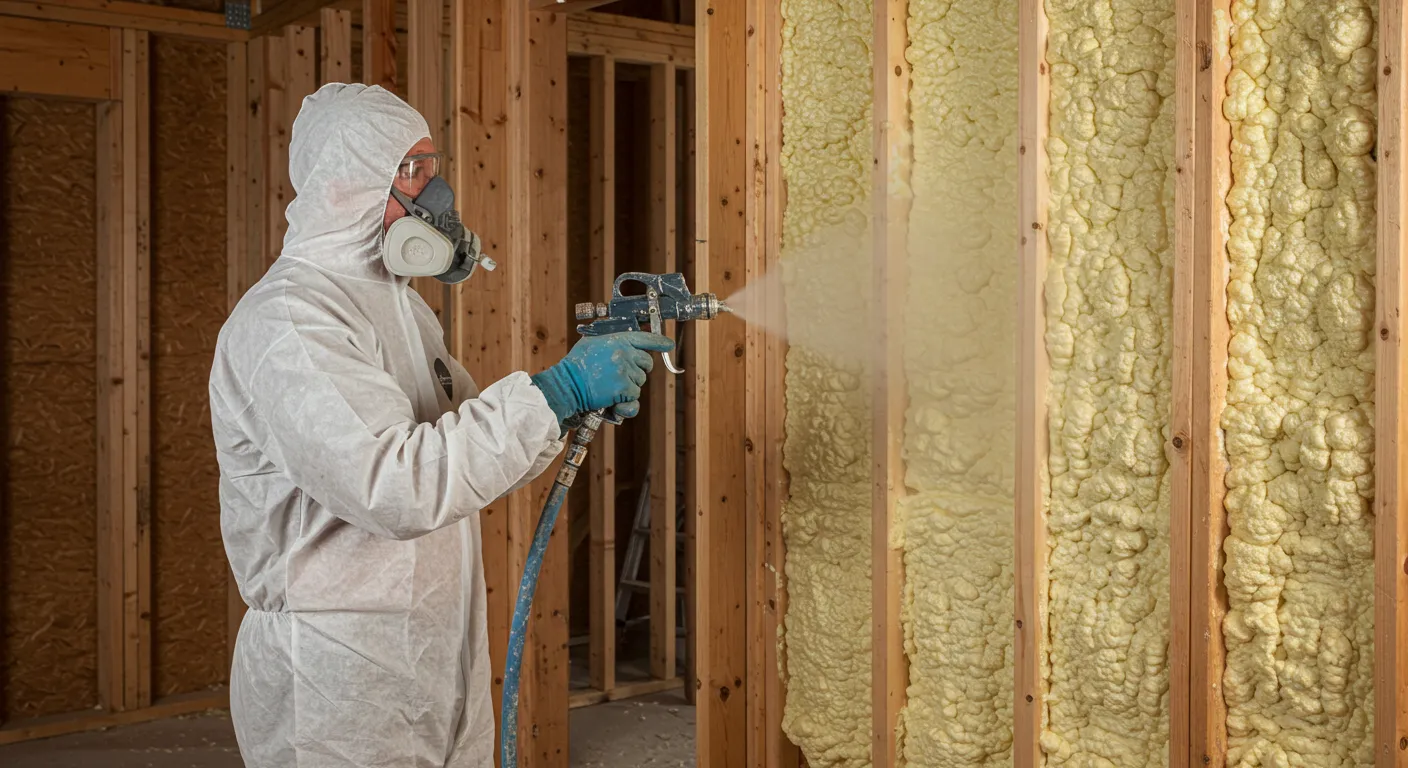
Installing spray foam insulation involves exposure to chemicals and application methods that can create safety risks if handled incorrectly. In Marshall County, KY, local weather patterns, building codes, and common construction styles influence how safely and effectively spray foam can be used. Primary safety considerations include proper ventilation during installation, use of personal protective equipment (PPE), curing times, fire rating compliance, and avoidance of off-gassing risks in sealed environments.
Property owners must factor in these risks before starting a project. Ignoring them can lead to respiratory hazards, structural fire risks, and long-term indoor air quality issues. This guide provides a clear breakdown of every factor based on direct installation experience and current regulatory guidance, especially when working with materials like fiberglass batt insulation.
Bonus Tip: Use a blower door test post-installation to verify air sealing and confirm that all safety zones were respected.
Bonus Tip: Mineral wool or fire-rated drywall makes an effective thermal barrier over spray foam in attics.
| Parameter | Open-Cell Foam | Closed-Cell Foam |
|---|---|---|
| R-Value per inch | ~3.6 | ~6.5 |
| Water permeability | High | Low |
| Density | ~0.5 lb/ft³ | ~2 lb/ft³ |
| Expansion rate | ~100:1 | ~30:1 |
| Typical cure time (70°F, 50% RH) | 8-24 hours | 4-6 hours |
| Fire rating (w/o barrier) | Not compliant | Not compliant |
| Safety Factor | Spray Foam | Fiberglass Batt | Mineral Wool |
|---|---|---|---|
| Respiratory hazard during install | High | Low | Low |
| Chemical off-gassing risk | Moderate to High | None | None |
| Fire resistance (bare) | Low | Moderate | High |
| Moisture resistance | High (closed-cell) | Low | High |
| Need for ventilation post-install | Required | Not required | Not required |

No. All occupants must vacate the property during and at least 24 hours post-install.
Yes, but only when combined with a thermal or ignition barrier and proper ventilation.
Mechanical systems may be required before installation to ensure safe air quality post-application.
Between 4-24 hours depending on temperature, humidity, and foam type.
Armored Insulation provides code-compliant, safety-focused spray foam installation for residential and commercial properties across Marshall County, KY. For detailed assessments or questions about safe application in your building:
Email: [email protected]
Phone: (270) 331-4844
Check for visible ignition barriers in required zones and request post-install air quality testing.
Yes. Unprotected spray foam is combustible. Fire-rated barriers are mandatory.
This may indicate incomplete curing or poor ventilation. Contact the installer for air testing.
When properly cured and ventilated, no. Off-gassing should stop within 24-72 hours.
Yes. Refer to IRC R316 and Kentucky Residential Code for compliance in foam use.